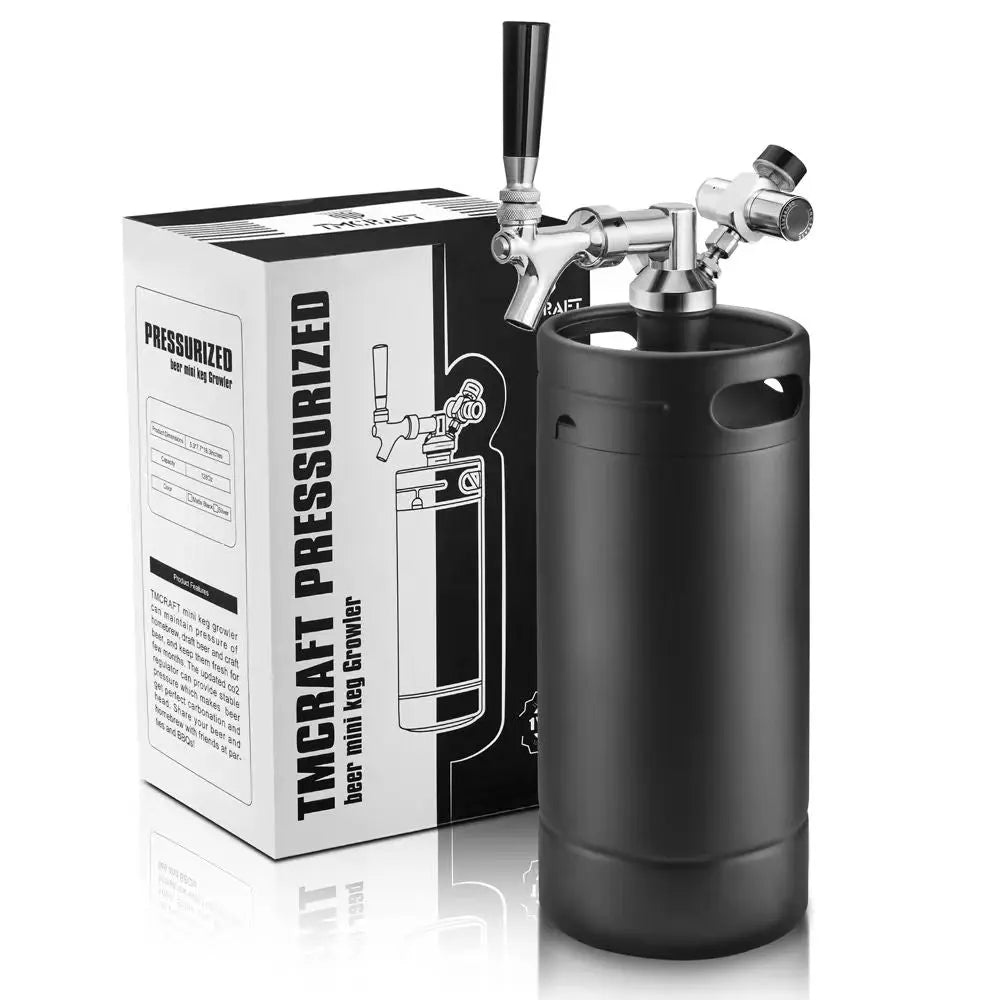Ball Lock vs. Pin Lock: Which Kegging System Is Right for Your Homebrew Setup?
 Keywords: Ball Lock Keg, Homebrewing Equipment, Kegging System, TMCRAFT Ball Lock Kegs
Keywords: Ball Lock Keg, Homebrewing Equipment, Kegging System, TMCRAFT Ball Lock Kegs
As you dive deeper into homebrewing, switching from bottling to kegging is a major milestone. But once you decide to keg your brew, the next big question arises: Ball Lock or Pin Lock? Both are proven systems that get your beer from fermenter to glass—but which is better for your setup?
In this guide, we’ll break down the differences, advantages, and considerations so you can choose the right kegging system for your brewing style. Spoiler: If simplicity and compatibility matter, TMCRAFT Ball Lock Kegs may be your best bet.
⚙️ Understanding the Basics: What’s the Difference?
At a glance, Ball Lock and Pin Lock kegs serve the same function—storing and dispensing carbonated beer—but they differ in size, connection type, and handling.
| Feature | Ball Lock Keg | Pin Lock Keg |
|---|---|---|
| Height | Taller (25") | Shorter (22") |
| Diameter | Narrower | Wider |
| Connections | Ball-type posts | Pin-style posts |
| Post Labeling | Marked “IN” and “OUT” | Use pins to differentiate |
| Popularity Today | Most common in modern setups | Less common, often used for soda |
Verdict: Ball Lock kegs offer more flexibility, are easier to find accessories for, and are the current industry standard—especially for homebrewers using modern gear.
🔩 Why Ball Lock Kegs Are the Homebrewer’s Favorite
There’s a reason most new brewers opt for ball lock systems: they’re more user-friendly and better supported by modern homebrewing equipment.
✅ Key Benefits of Ball Lock Kegs:
- Standardized quick-connect fittings for gas and liquid lines
- Better availability of replacement parts
- Easier to clean and sanitize thanks to removeable posts
- Compatible with most homebrew setups and mini keg systems
TMCRAFT Ball Lock Kegs are crafted with precision-machined stainless steel, pressure-tested for safety, and designed to last batch after batch.
🧰 Choosing the Right Keg for Your Brewing Space
Your brewing space and setup will influence the ideal keg size and shape.
- Tight fridge space? Go for Ball Lock's slim profile
- Wider cooler or kegerator? Either option may fit
- Already have ball lock connectors or equipment? Stick with Ball Lock for easier integration
- Want to use mini kegs with ball lock fittings? TMCRAFT has compatible options!
Pro Tip: Measure your fermentation chamber or kegerator before you invest in multiple kegs—fit matters.
🛠️ Transitioning to Ball Lock? Here’s What You’ll Need
If you’re switching to or starting with TMCRAFT Ball Lock Kegs, here’s a simple checklist:
- Ball Lock Keg(s) – Cleaned, sanitized, and pressure-tested
- CO₂ Tank and Regulator – Essential for carbonation and serving
- Ball Lock Connectors – One gas, one liquid (usually color-coded)
- Beer and Gas Lines – Food-grade tubing for safe, clean transfers
- Kegerator or Fridge Space – Or an insulated bag for travel!
Once your keg is pressurized and chilled, you're just a pour away from cold, fresh beer.
🍻 Final Verdict: Why TMCRAFT Ball Lock Kegs Win
If you want a streamlined kegging experience with the broadest compatibility, Ball Lock Kegs are the clear winner. Whether you're upgrading from bottling or adding to your current kegging system, TMCRAFT Ball Lock Kegs offer reliability, ease of use, and professional-grade construction.

